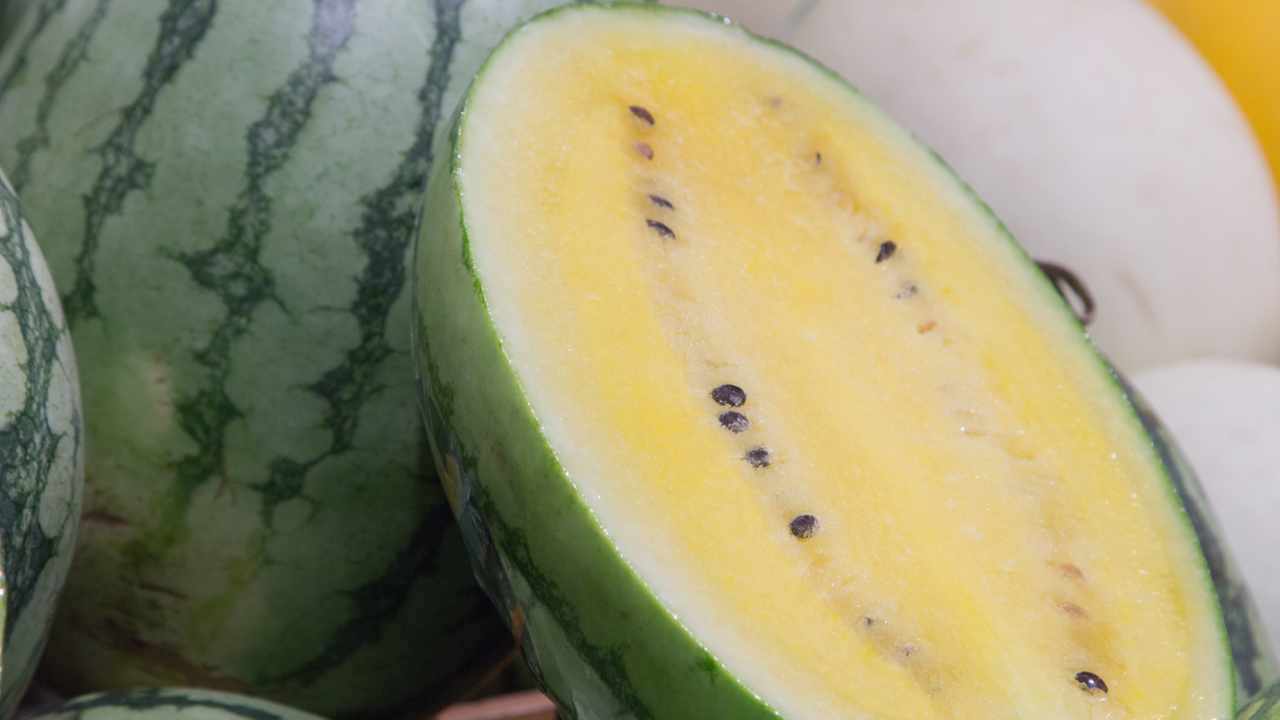Have You Ever Seen Yellow Watermelon? What Is the Difference and How It Is Eaten
This special variant of watermelon, often affectionately named “Coco-pineapple” due to its unique color, stands out with its vibrant yellow flesh. The yellow watermelon is distinguished not only by its color but also by its nutritional benefits and a flavor that sets it apart from the traditional red watermelon. If you haven’t encountered it yet, now is the time to get to know it. I’m certain that starting tomorrow, you will also be looking for it in the supermarket near your home.

History and Features
Even though many people aren’t familiar with yellow watermelon, it’s a real delicacy. Let’s clarify upfront that it’s not an exotic or artificially dyed fruit but rather a completely natural outcome of an experimental process. Originating in Japan, this fruit emerged after growers experimented with different grafts. Undoubtedly, when you see it at the fruit stand, it arouses a sense of wonder and astonishment.

Despite its small size, it has very thin green skin. As for its flavor profile, opinions vary, with some likening it to the sweetness of mango, while others draw parallels to pineapple or even prickly pear. Undoubtedly, it serves as an excellent addition to delectable summer fruit salads, enhancing their taste and appeal.

Nutritional Properties
It might sound unbelievable, but the yellow watermelon boasts a wealth of nutritional advantages. Notably, it carries fewer calories compared to its red counterpart. It also possesses antioxidant and purifying properties. Its pulp contains a good quantity of mineral salts, especially potassium. Being a fruit imbued with a yellow hue, it’s rich in beta-carotene and vitamin A. Consistently consuming it allows you to prevent inflammation, various ailments, and even premature aging, offering a holistic approach to wellness.





